An Air Assault Division Leaps Forward
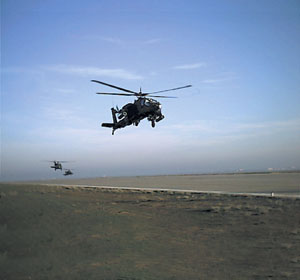 |
| Apache helicopters from the U.S. Army’s 101st Airborne Division (Air Assault) land at a remote airstrip. The division is one of the first to undergo an Army-wide transformation into a modular force. |
This month marks the transformation of the U.S. Army’s only air assault division into a new modular format that is designed to lead the Army into the future. Following similar changes at the 3rd Infantry Division, Fort Stewart, Georgia, the 101st Airborne Division (Air Assault) at Fort Campbell, Kentucky, is metamorphosing into a modular construct that brings with it significant changes in structure and equipment.
The concept of a division main headquarters is going the way of the jeep. Specialized elements within the division are being dispersed to brigade-level units. And, the 501st Signal Battalion, which provided network connectivity to the 101st during the Iraq War (SIGNAL, June 2003, pages 17 and 25), will cease to exist after the conversion is complete.
Lt. Col. Eric Harris, USA, is the chief of the modularity coordination cell in the 101st Airborne Division. The division established this cell with contractor help from the U.S. Forces Command, Fort McPherson, Georgia, to plan, coordinate and synchronize the division’s march to the new modular design, he relates.
Following the Army’s modular transformation blueprint, the new division will comprise units of action, or UAs, that are structured at the brigade level. The Army envisions two types of UAs: heavy UAs, which are armor-centric, and infantry UAs. The 101st is converting to infantry UAs, which are very similar to a brigade combat team, Col. Harris points out.
The colonel continues that this is the same way that the division fought in the Iraq War. When the 101st was garrisoned at Fort Campbell, it was pure-organized with its artillery, its signals and its aviation located separately in a pool system. When the division deployed, it task-organized into brigade combat teams depending on the mission for each brigade commander. While the division originally had three combat brigade teams, it will have four UAs.
The modular design is enabling the same brigade-level task organization, but now on a permanent basis. Each infantry UA will consist of a brigade troops battalion that will include a signal company, an engineer company and a military intelligence company. This UA also will have two infantry battalions similar to the ones deployed in Iraq.
A fourth battalion will be a reconnaissance, surveillance and target acquisition squadron, or RSTA. Col. Harris likens this to the RSTA inherent in Stryker brigades—comprising high-mobility multipurpose wheeled vehicle (HMMWV)-based mounted ground troops and dismounted ground troops. A fifth battalion is a fire battalion similar to existing artillery battalions, except it will feature two batteries slightly bigger than the three current batteries. And, a sixth battalion serves as the brigade support battalion. This comprises mechanical, cook and vehicle support.
The colonel notes that the brigade staff is “more beefed up.” Several functional areas such as those of the staff judge advocate, public affairs officer and chaplain will be embedded at this staff level. The approach is that the staff functionality that used to be performed at the division level will be pushed down to the infantry UA level. Replacing division main headquarters will be a unit of employment (higher tactical), or UEx.
With a signal company embedded in each UA, the conventional approach of having a signal battalion serve as a pool of expertise and equipment for the division no longer applies. Chief Warrant Officer 2 Andrew Kedjierski, USA, 501st Signal Battalion network technician, explains that the 501st “will go away” by splitting up into signal companies. The signal company received by each UA will suit its own information system requirements. “Each UA will have a signal company that lives and breathes with them,” the chief says. “They will support that signal company, which in turn will be able to be utilized by that UA commander at his discretion. The result is that the commanders on the ground will have more flexibility in what they do,” Chief Kedjierski declares.
A signal company at the UEx level will support the division-level tactical operations centers (TOCs) and planning assessment center. It will serve as the higher headquarters for UAs in their area of operations. One element inside that signal company will support each of the division tactical analysis centers (TACs), and another will control the overall network.
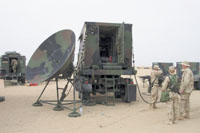 |
| Members of the 501st Signal Battalion in the 101st Airborne Division establish satellite links during the Iraq War. The 501st will disappear as its elements are distributed among units of action built around the division’s brigade structures. |
The chief continues that the newly distributed signaleers are receiving all new equipment. The existing gear that supported the air assault division in its Iraq combat little more than a year ago is being replaced almost completely. “Pretty much, we will be getting rid of everything we own right now,” he says.
The new gear will incorporate new commercial off-the-shelf technologies, including voice over Internet protocol (VoIP) telephones and other systems that the division has never taken to war before. Line-of-sight transmission media will give way to satellite links that will extend capabilities farther down the action chain.
Under development is a joint network node, or JNN, that will serve the UAs and the UEx. The 3rd Infantry Division, which is the first to undergo the modular transformation, will be the first to receive it. The JNN will replace mobile subscriber equipment (MSE) as the networking element of the battlefield infostructure. MSE will continue to serve the 101st until the JNN is totally fielded. JNNs will support the UAs as well as the TOCs at the UEx level.
Another piece of communications equipment being added to the division’s information arsenal is a battalion command post node. This system will support all of the battalions within the UAs by bringing secret Internet protocol router network (SIPRNET) capabilities down to the battalion level.
Satellites will play the key role in providing communications links. Chief Kedjierski explains that the division is transitioning to a strict satellite architecture from the UEx level down to the battalion level. This will enable the commanding general to talk to individual battalion commanders, if necessary. The VoIP telephones will replace existing digital telephony systems. This will provide greater bandwidth efficiency across the network, he offers.
The UEx and the UAs also will receive multiplexing capabilities. Officials are looking at extending videoconferencing capabilities across the division down to the UA level. Ultimately, this capability may extend down to the battalion level.
This extended networking capability will affect the way the division allocates forces. In the past, the division would have dispatched a brigade combat team to carry out a mission 100 miles away. Now, a battalion with its new satellite assets may be able to perform the same mission.
Meanwhile, the division already is looking at new technologies that do not come with the JNN or the battalion command post next year. The JNN does not include the desired videoconferencing capability, for example. Division officials view that capability as a requirement and already are considering what they must purchase to install it across the battlefield.
Cellular telephony coverage also is under examination. The old system featured the remote access unit, or RAU, which provided mobile subscriber radio terminal support and mobile telephone support across the battlefield. That capability has gone away, Chief Kedjierski reports, so officials are looking into cellular telephone technologies to determine the kind of secure wireless network that can be added to the division’s communications package. Other technologies under consideration include server technologies for network security, software updates and exchange technologies for mail.
In the buildup to the Iraq War, the 501st created a communications network in the desert and then passed its elements to the individual brigades and units. Under the new configuration, these elements already will be embedded in the brigades. Each signal company will have its own section that controls the internal network to the brigade. At the division level, the signal company will include a network management cell tasked with designing the division network for the division TOCs. It also will perform the necessary coordination for tying together the brigades’ networks.
Technicians on the ground in each brigade will include warrant officers and senior automation experts to design the individual UA network. Personnel at the division level will tie those UA networks together, Chief Kedjierski explains.
These changes will require signal soldiers to undergo additional training (SIGNAL, September, page 29). Chief Kedjierski allows that everyone in the Signal Corps now will need to learn an entirely new job. “It’s nothing like we have ever done before. It will make a lot smarter soldiers; it is going to put a lot more pressure on [noncommissioned officers] and officers to make sure their soldiers are trained; and it will make a smarter force.”
The air assault division’s aviation also is undergoing a redesign. Currently, this division has two aviation brigades—one primarily serves attack roles, and the other performs lift. The new approach will balance the two functions in aviation UAs that will have attack, lift, heavy lift, air cavalry and maintenance. These new balanced aviation UAs will be self-sufficient, Col. Harris reports, and they will be capable of being pulled out and plugged into operation in their regular form.
One big advantage is that a deployment need not draw different elements into the field. In the past, performing both lift and attack would require taking elements of both the 101st Aviation Brigade and the 159th Aviation Brigade. All of the attack assets were in the 101st Aviation Brigade, while all of the lift was in the 159th. Now, both of these aviation UAs are balanced with organic lift and attack assets. “You don’t have to buy the whole cow now,” Col. Harris analogizes. “You can take just the milk.”
Except for signal assets, this modular transformation will not require extensive additions of equipment. Existing assets are being reallocated; and while some new assets are being added, other existing assets are being given away. Col. Harris notes that some of the division’s lift capability is being given to the 10th Mountain Division, Fort Drum, New York, which is undergoing its own modular transformation in the same time frame as the 101st. The 3rd Infantry Division also is receiving some of the 101st’s lift capability. In return, the 101st is receiving more scout assets.
“The end state will be that the infantry UAs here in the 101st will look like the infantry units at the 10th Mountain Division,” Col. Harris declares. The same holds true for the aviation UAs in the 101st and the 82nd Airborne Divisions.
The modular transformation will make the division more flexible and provide lethality and mobility in smaller packages, especially with the addition of a fourth brigade combat team, Col. Harris affirms. The transformation does not change the way the division will fight, he adds. Instead, it will reflect the configuration that the division assumed when it deployed. Instead of breaking up existing organizations into action units, as it enters combat the division will be based in those units—the UAs—well before deployment. “Now we will truly be training as we fight,” Col. Harris says.
Chief Kedjierski explains what this will mean to signaleers. “In the past, the brigade commander would see his signal company commander only when he went into the field. But now, that brigade commander owns that signal company on a permanent basis. It is up to him to ensure that it is trained and utilized, and he now is building that continuity, that team, within his organization.”
Col. Harris compares this with the division’s experience in the Iraq War. “The way we were arrayed in Iraq—with the brigades spread out all over northern Iraq—we were broken down in exactly what we will look like in the future with the UAs,” he observes. “Each brigade combat team had its artillery assigned to it; each had its signal piece assigned to it.
“We are reorganizing the division as to how we permanently fight,” he declares.
Web Resources
101st Airborne Division (Air Assault): www.campbell.army.mil/division.htm
501st Signal Battalion: www.campbell.army.mil/501stsig/501SigHome.htm
U.S. Army Campaign Plan: www.army.mil/thewayahead/acp.html
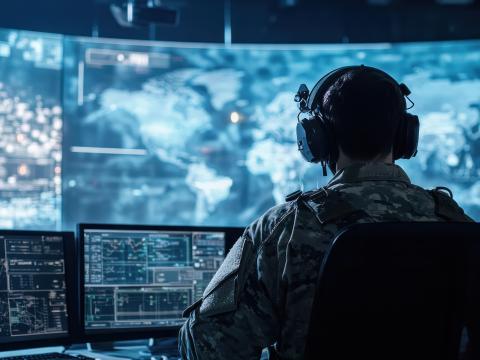
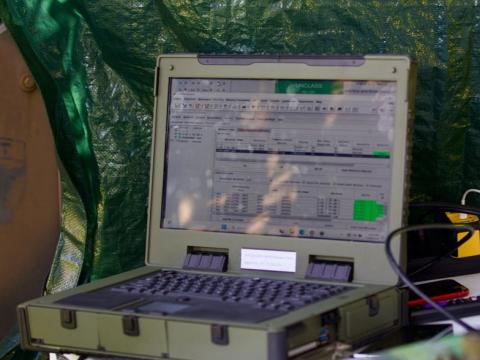
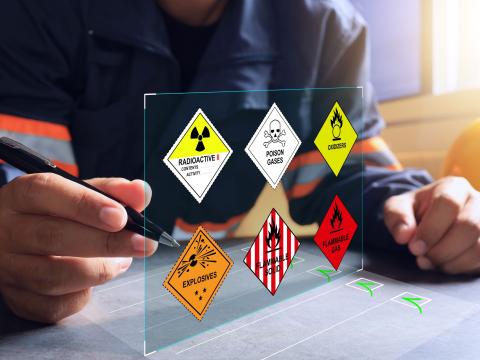

Comments